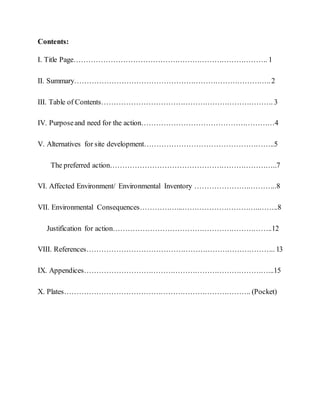The document provides an environmental impact statement for a property located at 414 Cross Mountain Drive in Fredericksburg, Texas. It evaluates three alternative actions for the property: maintaining the single-family residence with sustainable practices, converting the property to a city park, or transitioning it to a bed and breakfast. The preferred action is converting it to a bed and breakfast while implementing various mitigation measures, such as using water-efficient landscaping and appliances, to minimize environmental impacts.













